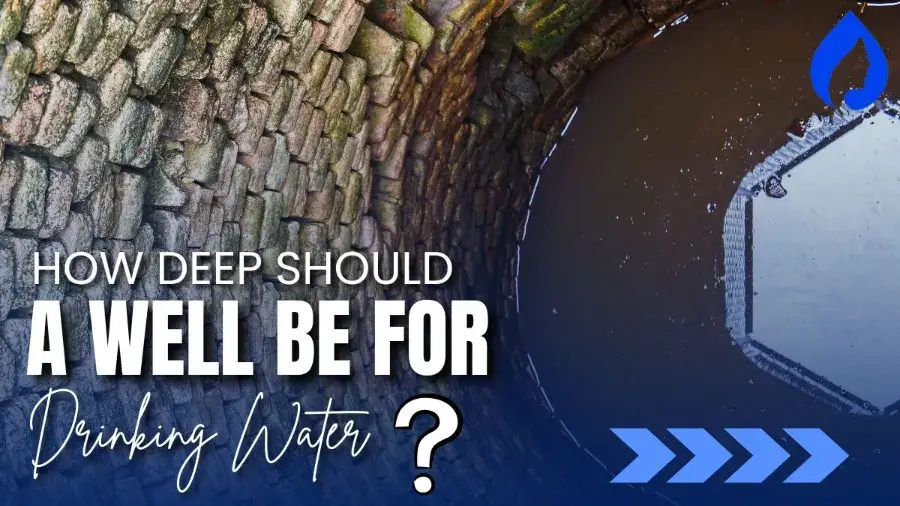
According to the Water Systems Council and WellCare guidelines for the entire nation, the average depth of wells for drinking water falls from 100 to 800 feet.
Sometimes, well depths can extend to as much as 1000 feet.
However, the specific depth at which a well should be drilled depends on various factors, including the groundwater table and geological conditions in your area.
Continue reading for an in-depth guide on ideal well depth for safe drinking water and household needs.
🚰How Deep is a Typical Residential Well?
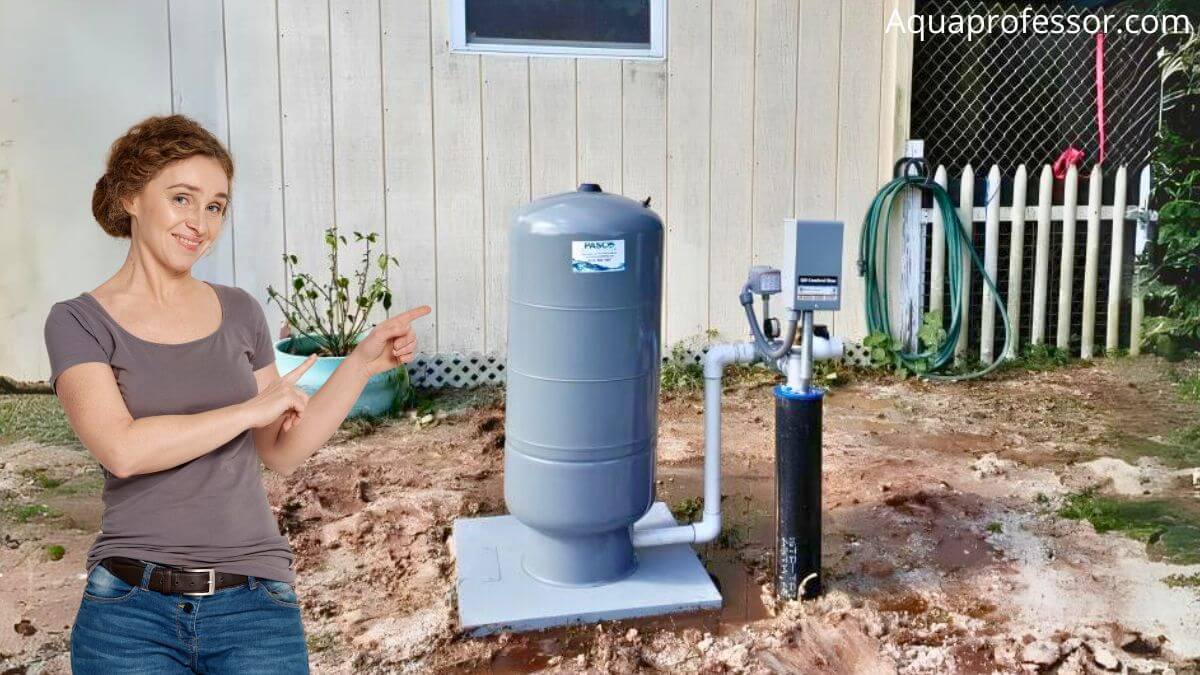
As per Water Systems Council, residential wells in the United States are around 100 to 800 feet deep
The median depth for domestic wells is 142 feet across the US.
However, this is a broad estimate, and the actual depth of a residential well can vary widely based on various factors, including local geology and the groundwater table in the area.
🔎How Deep Should a Well Be for Drinking Water?
The factors that play a significant role in deciding the optimal depth, ensuring a safe and reliable source of drinking water are as follows
👉Ground Water Table
The depth of the groundwater table in your area is a critical factor in determining the depth of the well.
The groundwater table is the level at which water saturates the soil and rock, and wells must extend below this level to ensure a consistent water supply.
It’s essential to check how deep wells are in your local area to get a sense of the typical water table depth.
A valuable resource for this is The National Groundwater Monitoring Network compilation database, which allows you to zoom in on your specific location and understand groundwater conditions.
Furthermore, different state governments and Local County Health Department maintain well databases for their respective areas, like this:
You can easily access these databases by searching for “[state name] Water well depth map” on Google.
These maps provide valuable insights into the groundwater table’s depth and variations within your state.
👉Local Geology

The geological composition of your area plays a significant role in determining the depth of a well for drinking water.
In some areas, the ground may be more rocky, and water can be found at shallower depths.
In other places, the ground may have layers that do not allow water to pass through easily.
In such places, drilling deeper may be necessary to access water. Understanding the local geology is essential to assess the optimal well depth.
👉Seasonal Fluctuations
Seasonal variations in groundwater levels can affect the depth requirement for a well.
In some regions, water tables may rise during wet seasons and drop during dry seasons.
The well depth should account for these fluctuations to ensure a consistent water supply.
This may involve drilling deeper to reach the lowest expected water levels during the driest periods of the year.
👉Surface Contamination and Water Quality

Surface water contamination poses a significant concern when determining the appropriate depth for a well used for potable water.
This factor directly impacts the quality and safety of the water you’ll be consuming.
Surface Contamination Risks:
👉Government Regulations and Codes
Government regulations and codes are essential when determining average well depth for drinking water.
Local and state governments often have specific well construction requirements and standards, including minimum depth specifications.
Advantages:
These local regulations aim to safeguard groundwater resources, ensure proper well construction and well maintenance, and establish water quality standards to protect public health.
Compliance with these regulations, obtaining necessary permits, and consulting licensed well contractors well-versed in local requirements are crucial steps in constructing a safe, reliable, and legally compliant well for drinking water.
🤔Well Depth and Water Quality: Do Deeper Wells Mean Better Water?

The depth of a well is a critical factor when it comes to water quality and reliability.
Deeper wells offer better water quality and are less likely to go dry.
However, the relationship between well depth and water quality is not entirely straightforward, and other factors also come into play.
🎯Deeper Wells and Water Quality
It’s generally believed that deeper wells often result in better water quality.
This belief stems from deeper wells accessing groundwater sources that are further removed from potential surface contamination.
As water travels through layers of rock and soil, it undergoes natural filtration, which can lead to improved water quality.
Additionally, deeper wells are less susceptible to seasonal fluctuations in water levels, making them more reliable sources of clean water.
🦠Well Casing and Water Contamination
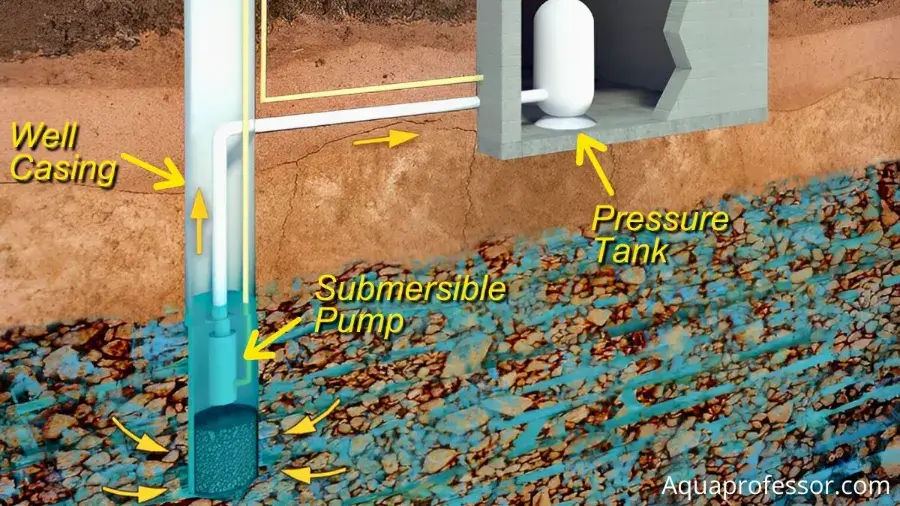
While well depth is essential, it’s crucial to understand that well casing significantly prevents water contamination.
Well casing is the protective structure that surrounds the wellbore.
Proper casing and sealing are essential to prevent surface contaminants, such as bacteria, chemicals, or other contaminants, from entering the well.
So, even a deep well can be compromised if the well casing is inadequate.
📍Cases When Shallow Wells Are Actually Better
In some situations, shallow wells can be preferable:
A prudent approach to well depth follows the principle of “as shallow as possible, as deep as necessary.”
Assess your specific needs and the conditions in your area. Take cues from neighboring wells, especially those with good water quality and reliability.
Regardless of well depth, hiring a licensed well contractor knowledgeable about state well construction codes is essential.
They can assess local conditions and help you make the best choices for your well depth and casing to ensure the safety and quality of your drinking water.
Also Read: Best Water Filters To Remove Calcium
📊The Four Types of Wells
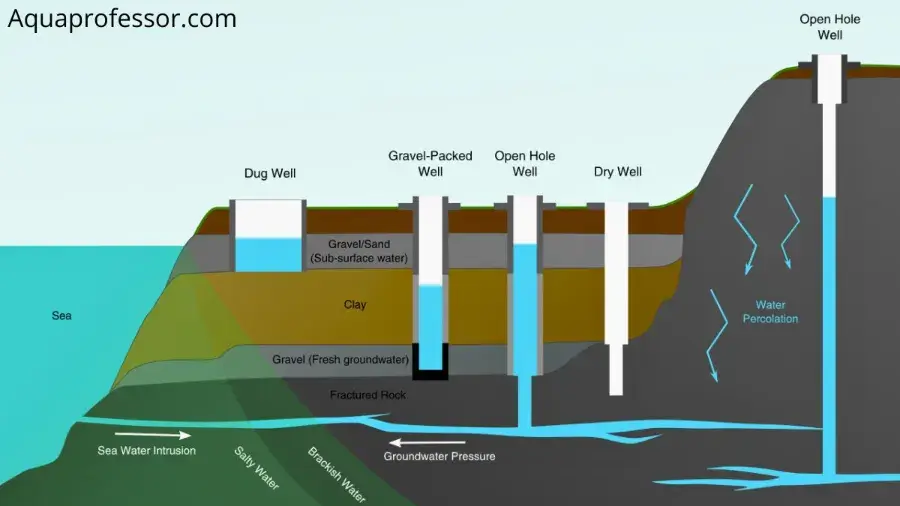
Wells are vital water sources for countless communities and households worldwide. They can be categorized into four primary types, each with its construction and usage characteristics:
1️⃣Dug Wells
Dug wells, or hand-dug or shallow wells, are typically excavated by hand tools or machinery.
They are relatively shallow and have a wide diameter.
Dug wells are often constructed in regions where the water table is near the surface.
However, their shallow depth makes them more susceptible to contamination from surface pollutants.
To reduce contamination risks, it is important to properly construct and maintain dug wells.
One way to do this is by ensuring maximum ground filtration.
2️⃣Driven Wells
Driven wells are created by driving a pipe or casing into the ground using specialized equipment.
The pipe is perforated at the bottom to allow water to enter.
Driven wells are generally shallow and rely on the water-bearing formations near the surface.
Like dug wells, they are susceptible to contamination and should be carefully constructed and maintained.
3️⃣Drive-Point Wells
Drive-point wells are a specific type of driven well. They are typically used for temporary or low-flow water needs.
A narrow-diameter pipe with a pointed tip is driven into the ground until it reaches the water table.
Drive-point wells are also shallow and can be more vulnerable to contamination due to their proximity to the surface.
4️⃣Bore Wells
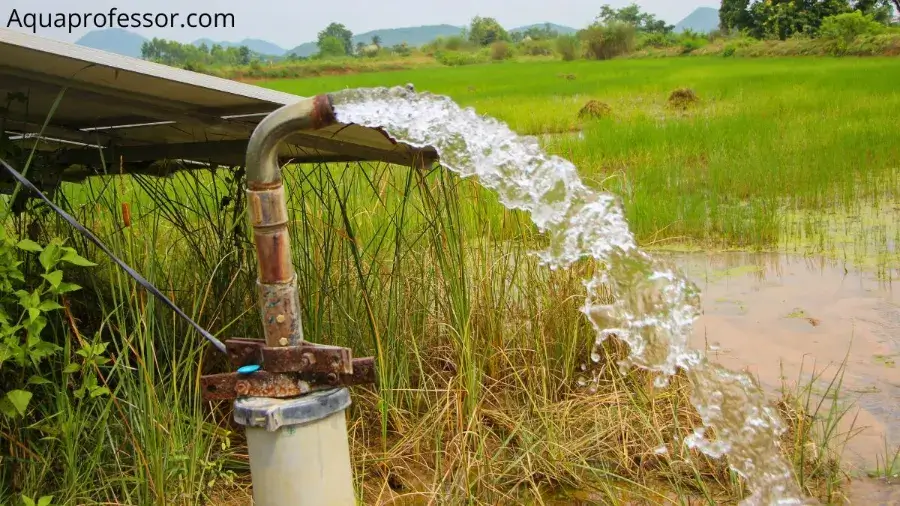
Bore wells, or drilled wells, are constructed by drilling a hole into the ground using specialized drilling equipment.
These wells can reach much greater depths than dug, driven, or drive-point wells, often tapping into deeper aquifers.
Bore wells are less susceptible to surface contamination, making them a preferred choice for accessing cleaner and more reliable water sources.
Also Read: Why My Well Water Pressure Fluctuates
💡How Deep Should a Well Be for Drinking Water: FAQs
How much should I budget for a well?
The average well installation cost ranges from $25 to $65 per foot. The total budget will depend on well depth and local labor rates.
How do I know if my well is deep enough?
Your well is deep enough if you have an adequate water supply throughout the year.
If not, contact a licensed well contractor to determine if the well needs to be further drilled.
How do I find well depths in my area?
If you’re looking for information on well depths in your area, you can use the USGS National Water Information System Mapper.
This tool allows you to search for wells and other water sources in your area by entering your location or using the map interface.
You can also filter your search results by well depth, well type, and other parameters.
Another helpful resource is the USGS Water Data for the Nation portal.
This database provides access to a wide range of water-related data, including information on groundwater levels and well depths.
To access this information, select “Groundwater” from the menu on the left-hand side of the page and choose “Water levels and depths” from the submenu.
How do I know if my well water is safe to drink?
To ensure well water safety, have a certified laboratory test your water regularly.
It’s important, especially if your water test results indicate contamination or if waterborne diseases are a concern.
What should I consider before digging a well?
Before digging a well, consider factors such as the local groundwater table, geological conditions, seasonal fluctuations, surface contamination risks,water quality, soil thickness, and compliance with government regulations.
Consulting with well-water experts is crucial for informed decisions.
Sayan understands that access to clean water doesn’t have to be costly.
He strives to provide knowledge of water purification techniques in the simplest way possible so that we can lead a healthy life without breaking our bank.
